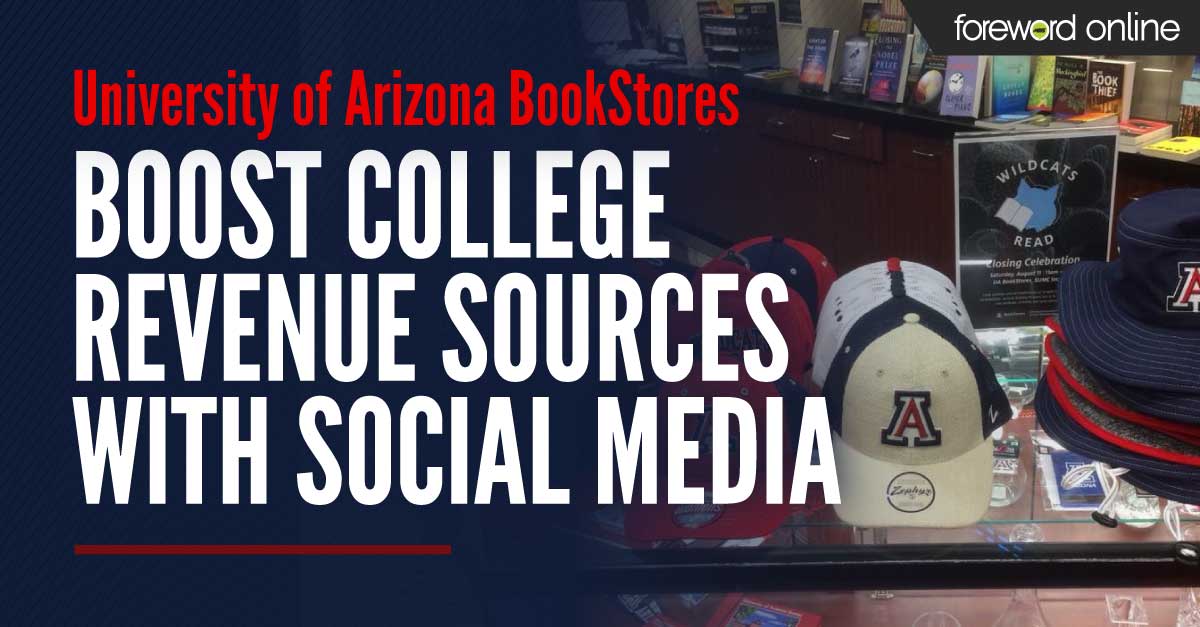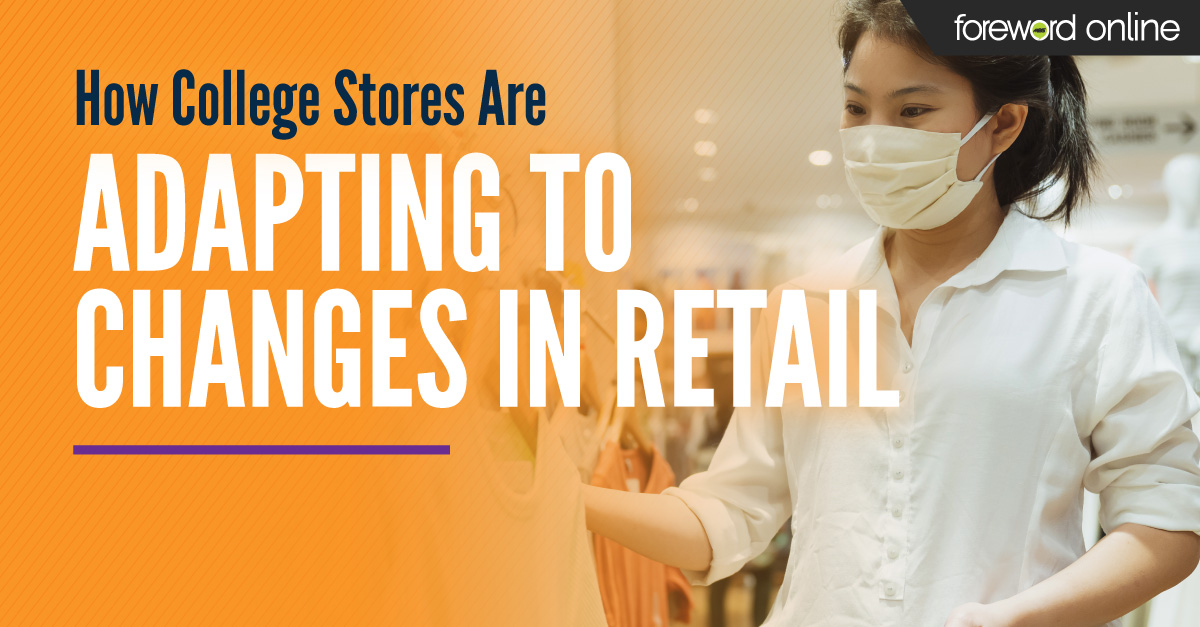The University of Arizona BookStores has cracked the code for converting social media engagement into store sales. Social media has tremendous potential to raise campus awareness and interest in store events and services. How can that potential be translated into a revenue generating idea for college stores?
Campus stores should tailor messaging for different social media audiences
One way to increase your social media engagement is to make sure your posts speak to different audiences on each platform. What that means is you would not post the same thing on Facebook that you would on Instagram. With each platform, your store is likely to have a different audience with different expectations.
“It’s important to know who your audiences are on each platform. That way, you are not bombarding all your channels with the same posts. The University of Arizona BookStores is on Facebook, Twitter and Instagram. We tailor our messages to those audiences on each platform. Therefore, each platform has a different marketing strategy. Some campaigns, however, are advertised on all channels, depending on the content,” Assistant Director, Marketing and Communication, Dennis Lusiana said. “Our students are on Instagram, so we create engagement there. Our faculty, staff and campus departments are on Twitter, so we push out information on that platform. The community is mostly on our Facebook. Since our bookstore does a lot of community engagement, we post our literacy events, book drives and sales on Facebook.”
The University of Arizona BookStores has also developed a strategy to boost engagement and grow their audience by understanding how each platform works and who their target audience is on the different channels.
“Since our students are mostly on Instagram, we create an activation event at the beginning of term. We set up a table and offer a giveaway item that students can enter to win by following us on Instagram. This increases our followers. This past fiscal year we gained a little under 500 new followers on Instagram just from our tabling sessions during back-to-school and orientation. We also update our story weekly as well as host contests for football and basketball tickets,” Lusiana said. “On Twitter, we do a lot of re-tweeting and paid ads through our school newspaper for further reach. This helps spread information throughout the campus channels. On Facebook, we use the event tool to promote ticketed events.”
How frequently should a campus store post on social media?
There isn’t a single posting strategy that will work best for every campus store. Develop a strategy that will work with the time and resources you have available in your store and test it. Track the results, and in a couple months, make adjustments based on those results. The University of Arizona BookStores has developed a strategy that works well for them.
“We try to post at least 2 to 3 times per week on Facebook. We post once per day on Twitter, and 1 to 2 posts per week on Instagram,” Lusiana said. “It’s also important to engage with your audience on those platforms. We comment on other people’s posts, respond when we are tagged, re-tweet other departments and are on top of replying to questions through our DMs. This helps maintain our customer service. It also increases our store’s exposure.”
By commenting on what other people or departments share and responding to the comments on the store’s posts, the University of Arizona BookStores can expand its reach. The people who follow those departments or individuals may not follow the bookstore. They may not be aware that the store is on social media. So, by being social and actively engaging their community, the store is able to organically extend its reach.
Campus partnerships help a college store’s social media efforts
Campus stores are part of the larger campus community. By forming strong relationships with departments and organizations that also support your campus, you can create new opportunities for the bookstore. One of those opportunities is through social media.
By following, commenting on and sharing what other campus entities post, you create a group of people willing to do the same for your store. This extends your reach to a larger portion of campus.
“Last year, we worked with Central Marketing and Brand Management to promote our Nike shoes, and we reached 26,900 organic impressions with 2,300 engagements. We also worked with them during back-to-school to encourage Wildcat Fridays. That’s where we ask all faculty, staff and students to wear red and blue on Fridays. All the departments on campus joined in posting the same video,” Lusiana said. “We also partnered with Athletics to start a voting poll that selected our last football game of the season’s t-shirt design. We had 27 campus departments share the post. We received 1,174 votes. My advice is to work with other departments on campus. Create the partnerships, especially with the all-stars on campus who have a great number of followers.”
How do stores boost college revenue sources with social media?
There are many ways a college store can monetize their social media efforts. On Instagram, stores can easily create shoppable ads where up to five items can be tagged and linked to your eCommerce site. You can also use social media to build excitement around store events and sales.
“Social media helps our store drive revenue, especially when we partner with other departments on campus. For example, we partner with the Alumni Association to promote our Graduation Festival and with Athletics to promote football and basketball shirts or items for each game. This, along with our call-to-action on each post, drives traffic to our website, because we link each product we are promoting to our website,” Lusiana said. “When we have partnerships with vendors and do pop-ups, we create paid ads that drive traffic to the store. When Champion did their pop-up, we spent $200 advertising on Facebook and Instagram. The ad had 31,891 impressions. When Hype and Vice came to our store, we had a line of people circling throughout the store from the 500 people watching our Instagram stories.”
Pop-up shops have helped the University of Arizona BookStores test student interest in high-demand products from popular brands before they decide to order the products for the store.
“With the decrease of students purchasing actual books, we have to get them in somehow. Partnering with different companies for pop ups allows us to bring in products that are in demand. We use these pop ups to test out different product before we buy into it for inventory. Pop-up companies usually have relationships that we may not have with different vendors. This opens the door for collaborations and further reach with customers,” Assistant Director, General Merchandise, Jake Wright said. “So far, we’ve had between 10 to 12 different pop ups in the store. These range from companies like Champion, Hype and Vice, and Chubbies to student owned and run companies.”
For stores thinking about adding pop-ups and focusing your social media efforts, Mr. Wright suggests that you form a true relationship with those vendors and listen to them about what works when marketing to the brand’s audience.
“Don’t be afraid to lean on the vendors. They know their audience, and they know what they want. It’s okay to let go of the reins if you’ve done your research on that company. Give them the general guidelines of your customer demographic but listen to them on what’s working,” Wright said. “We’ve seen good traction with companies that have a larger social media following. Hype and Vice, a women’s tailgate apparel company, does a great job using social media. They understand how to drive traffic. We see different traffic in the store than we normally would.”




.jpg)

